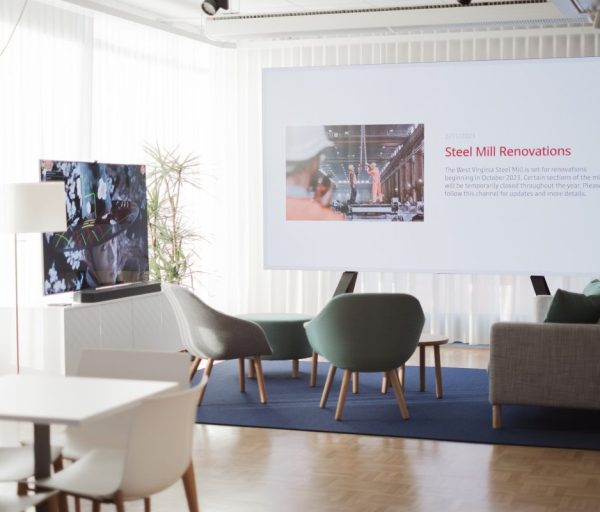For many, hybrid teams are becoming a reality, whether leaders want them or not.
Managing a fully remote team creates a challenge on its own for those unfamiliar. Hybrid teams, however, require an entirely new set of leadership best practices to keep both sets of workers informed, empowered, and engaged.
At the end of 2020, 71% of US workers said they were still working remotely. About half said they’d like to continue while another would prefer returning to the office.
Leadership Best Practices for Managing Teams Hybrid Teams On-Premises and Remote
With hybrid teams, it’s easy to neglect certain aspects of your remote team since the other half is on-site in your immediate company each day. Rethink how you approach communication with these leadership best practices.
1. Use Digital Tools to Keep Everyone Informed and Engaged
Part of the struggle with remote teams is just keeping everyone in constant communication on the same apps.
Remote teams can often feel forgotten, like an afterthought left out of the initial conversation.
Use digital signage and other tools to integrate your communication apps like Zoom, Skype, and Slack. Set clear expectations on who uses which app for which purpose.
Keep the whole team updated together on various milestones, metrics, and data with digital signage as well.
2. Double Down on Culture
Worker burnout and disengagement was already a problem with location-based workplaces long before the pandemic. People need to feel like they belong somewhere, like they’re part of something bigger.
Rethink what your company culture looks like on paper and in practice. Add to it. Then use digital tools to promote it and keep people involved.
3. Plan Virtual Events for the Whole Team
66% of workers also told Pew Research that they feel less connected to their co-workers than they did before the pandemic restrictions.
Not only is workplace camaraderie lacking, but there’s also no spontaneous after-work happy hours, concerts, meetups, or anything.
Make sure your hybrid team has ample opportunity to be social both on breaks and outside work hours. Use digital tools to promote social events on different apps like Hulu watch parties, book clubs, and hobby groups.
Build a “magnetized” office that people want to come to. Focus on a welcoming environment, supporting employee health & well-being, and enhancing the convenience of working on-site.
4. Make Expectations Clear
80% of workers told Pew Research they struggle to meet deadlines working remotely. Meanwhile, 64% fight an uphill battle with motivation.
Digital signage tools can keep people engaged and accountable – making your workplace more productive and transparent. Rather than tracking tools that feel more like spying, digital signage can push people to self-motivate as they would at work, periodically reminding them of deadlines, orders, and how they fit into the bigger project.
Follow Leadership Best Practices to Keep Your Team Cohesive with Integrated Digital Signage
Half the battle is ensuring remote teams have the tools and resources they need to do their job properly and efficiently. The other half involves bringing your virtual team into the fold with your on-site team via technology. Digital signage can help with all of it! Connecting digital signage with the collaboration tools that you already use makes it an effortless tool for communicators to boost employee engagement.
Learn why hybrid teams across 50 countries trust Valotalive for their communication and digital signage to keep workers engaged.



